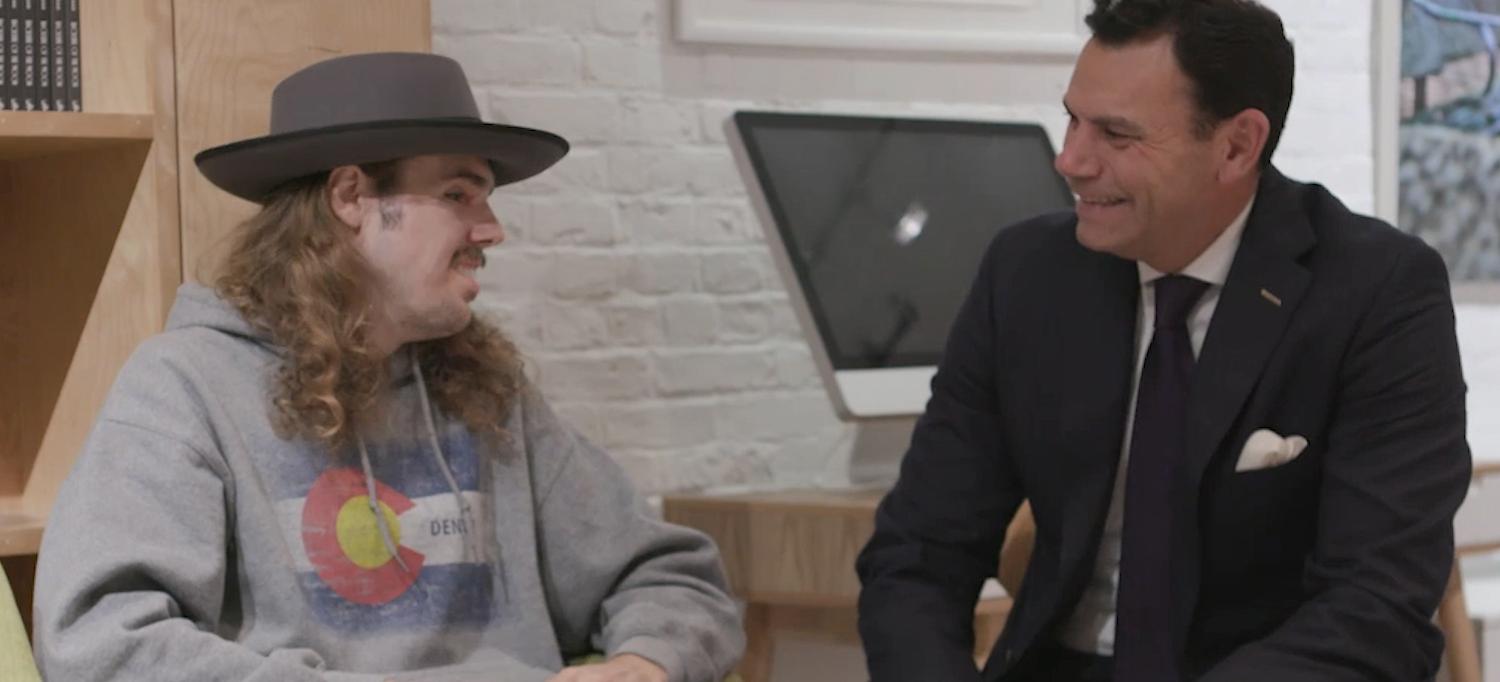Of the 40 Face Transplants Performed Worldwide Since the Procedure Debuted, Only Two Patients—Both at NYU Langone Health—Have Yet to Experience an Acute Rejection Episode

Cameron Underwood is the second person to receive a face transplant at NYU Langone Health. Dr. Eduardo D. Rodriguez led the surgical teams for both face transplants.
Photo: NYU Langone Health
In the months after 24-year-old Cameron Underwood of Yuba City, California, became the second person to receive a face transplant at NYU Langone Health early last year, something unexpected happened: nothing. Transplant patients are at greatest risk for an acute rejection episode during the first few months after surgery because the immune system may attack the donor’s tissue. The skin is highly immunogenic—that is, likely to elicit an immune response—so face transplant recipients are believed to be even more susceptible to acute rejection than recipients of solid organs. But nearly a year and a half after Underwood’s surgery, he has yet to experience this problem. The same is true for NYU Langone’s first face transplant patient, Patrick Hardison, a firefighter from Mississippi, whose surgery was performed 4 years ago when he was 41 years old.
A definitive explanation for why both men have escaped the threat of tissue rejection is still unclear, but Eduardo D. Rodriguez, MD, DDS, chair of the Hansjörg Wyss Department of Plastic Surgery, who led the surgical teams for both face transplants, and Bruce E. Gelb, MD, director of the transplant unit, who devised the antirejection protocol, have an intriguing hypothesis. If it’s confirmed, their novel approach to heading off acute rejections could change the standard of care for face transplant recipients everywhere and greatly improve these patients’ quality of life.
Most face transplant recipients prior to Patrick Hardison had received a standard combination of steroids and antithymocyte globulin, a T cell–depleting agent, prior to surgery to tamp down the immune system. Surprisingly, the regimen had failed to prevent acute rejection in even a single patient. So, in 2015, when Patrick Hardison was preparing for surgery, Dr. Gelb, assistant professor of surgery, knew he had to try something different. Seeking a way to delay rejection for at least one year, Dr. Gelb turned to another immunosuppressant, rituximab, which is commonly used in high-risk kidney transplants. Unlike the T cell–killing agent, rituximab also kills B cells, some of which linger in the transplanted skin. “There was little downside to trying it,” Dr. Gelb recalls, “so we administered a single dose to Patrick Hardison the day after surgery.”
When Hardison went more than two years without an acute rejection episode or even a spike in antibody levels, the doctors began to rethink what had happened—or didn’t happen. “A light bulb went on,” says Dr. Gelb. “We suspect that rituximab removes some of the immunogenic cells from the donor’s tissue. Adding that drug, while slowly reducing the immunosuppressants used for maintenance, may well account for our results.”
Drs. Gelb and Rodriguez decided on the same protocol for Underwood, but with a different rationale. “For Patrick, our aim was to reduce the risk of rejection,” notes Dr. Gelb, “but for Cameron, it was to prevent rejection entirely. Our initial results were unexpected, but they drove our plan the second time around.”
Dr. Gelb cautions that two successful outcomes do not constitute proof that rituximab is a game changer. But “given that the previous rate of rejection was 100 percent,” he notes, “it’s exceptionally promising.”
The lifelong regimen of immunosuppressants prescribed for face transplant patients is known to have life-threatening risks, including malignancies, organ damage, and virulent infections. The first recipient of a face transplant lived for 10 years, but Dr. Gelb acknowledges that with so few cases performed, life expectancy can’t really be estimated. What is known, however, is that preventing an acute rejection episode avoids high doses of the drugs needed to treat it.
“We now know that face transplants are technologically possible,” says Dr. Rodriguez, the Helen L. Kimmel Professor of Reconstructive Plastic Surgery. “What we hope for at this point is that these patients can have longevity with their new faces.”

